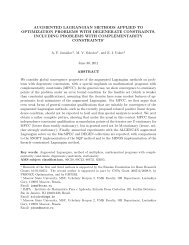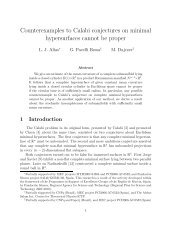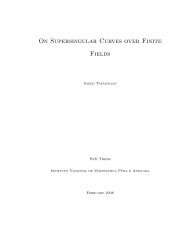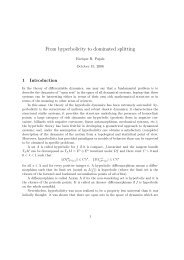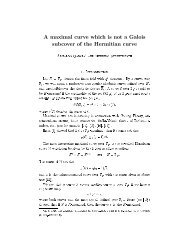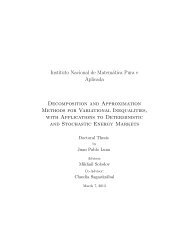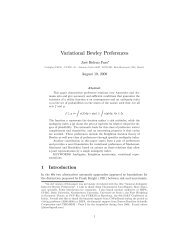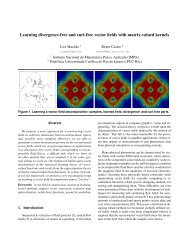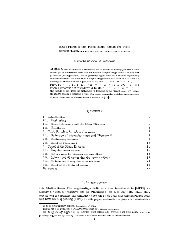a reduced model for internal waves interacting with submarine ...
a reduced model for internal waves interacting with submarine ...
a reduced model for internal waves interacting with submarine ...
Create successful ePaper yourself
Turn your PDF publications into a flip-book with our unique Google optimized e-Paper software.
<strong>model</strong> regarding this property.<br />
The work initiated here points out some lines of research. We intend to use the<br />
strongly nonlinear <strong>model</strong> and the weakly nonlinear higher order <strong>model</strong> to study<br />
the interaction of large amplitude <strong>internal</strong> <strong>waves</strong> <strong>with</strong> multiscale topography profiles.<br />
The refocusing and stabilization of solitary <strong>waves</strong> <strong>for</strong> the large levels of<br />
nonlinearity allowed by these <strong>model</strong>s is the goal of current research. A difficulty<br />
arises to this end, due to the nonlocal dispersive term: it is not easy to find explicit<br />
solitary wave solutions <strong>for</strong> the strongly nonlinear system, and the solitary<br />
<strong>waves</strong> suggested by the weakly one-directional lower-order theory steepen <strong>with</strong><br />
higher nonlinearity. In [8] the strategy to overcome this difficulty is to use the<br />
weakly one-directional solitary wave from the ILW equation as an initial guess<br />
<strong>for</strong> the solitary wave profile. Then find a numerical solitary wave iteratively via<br />
the Newton-Raphson method. The profile obtained will serve as initial data <strong>for</strong><br />
the propagating <strong>model</strong>.<br />
87



